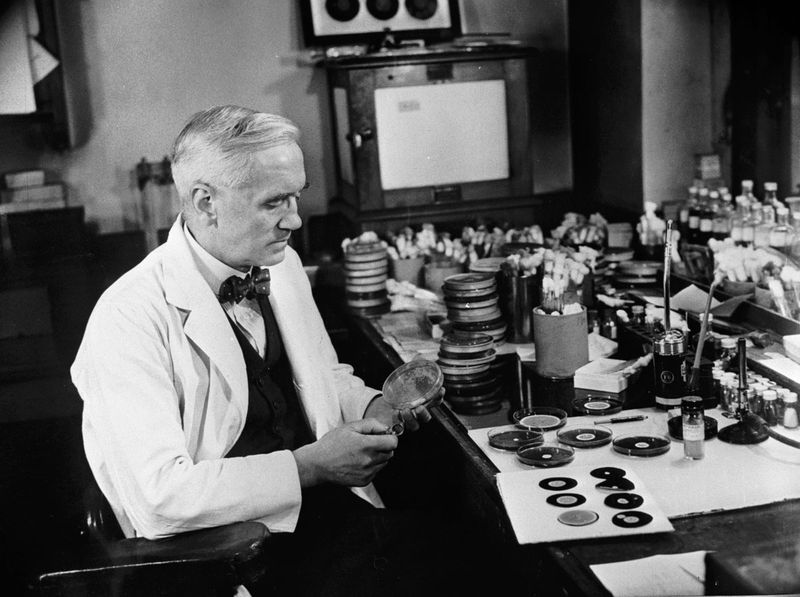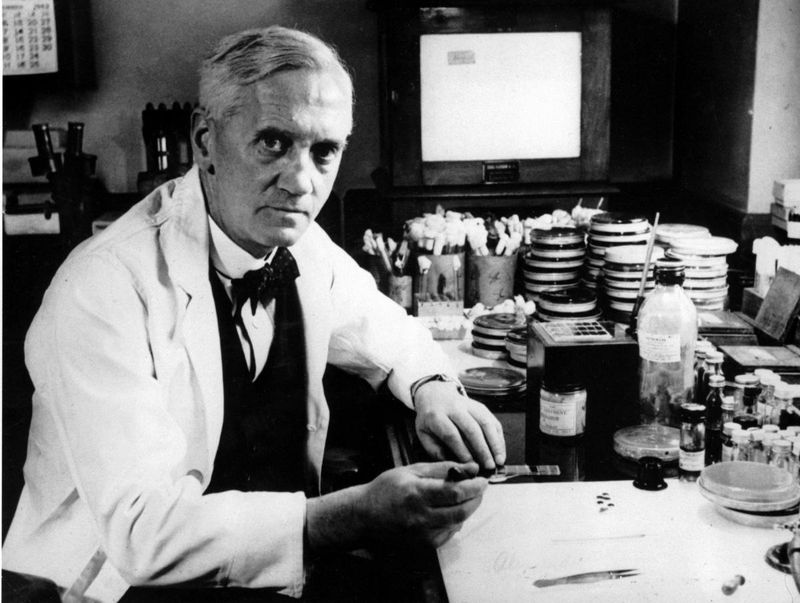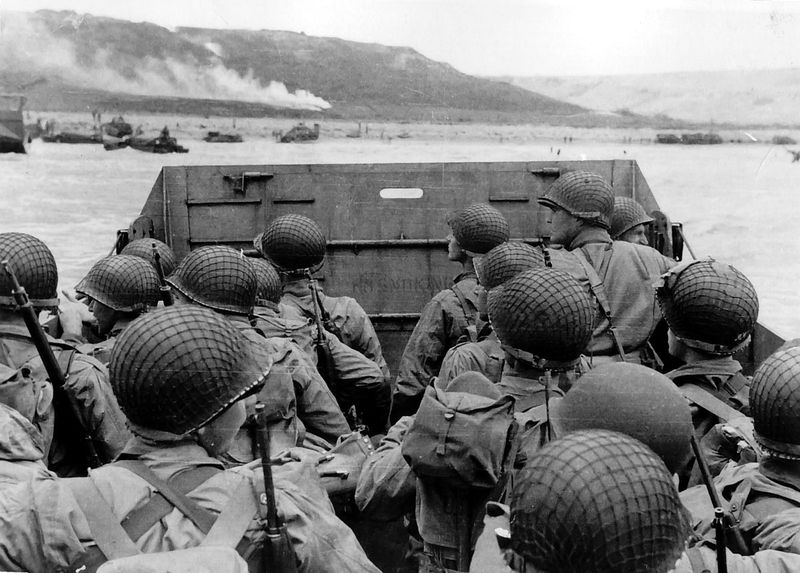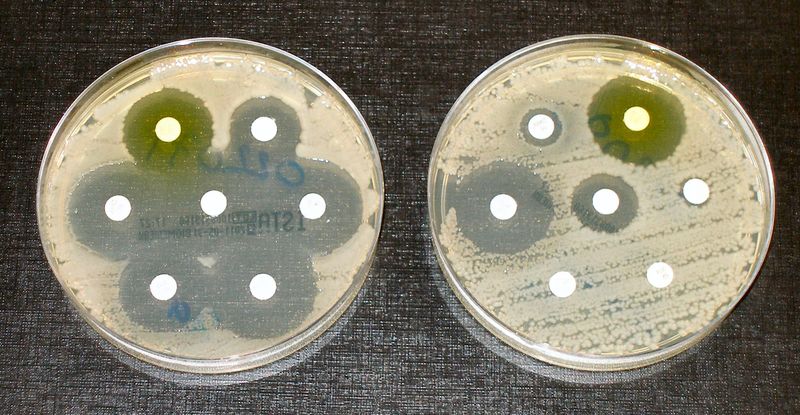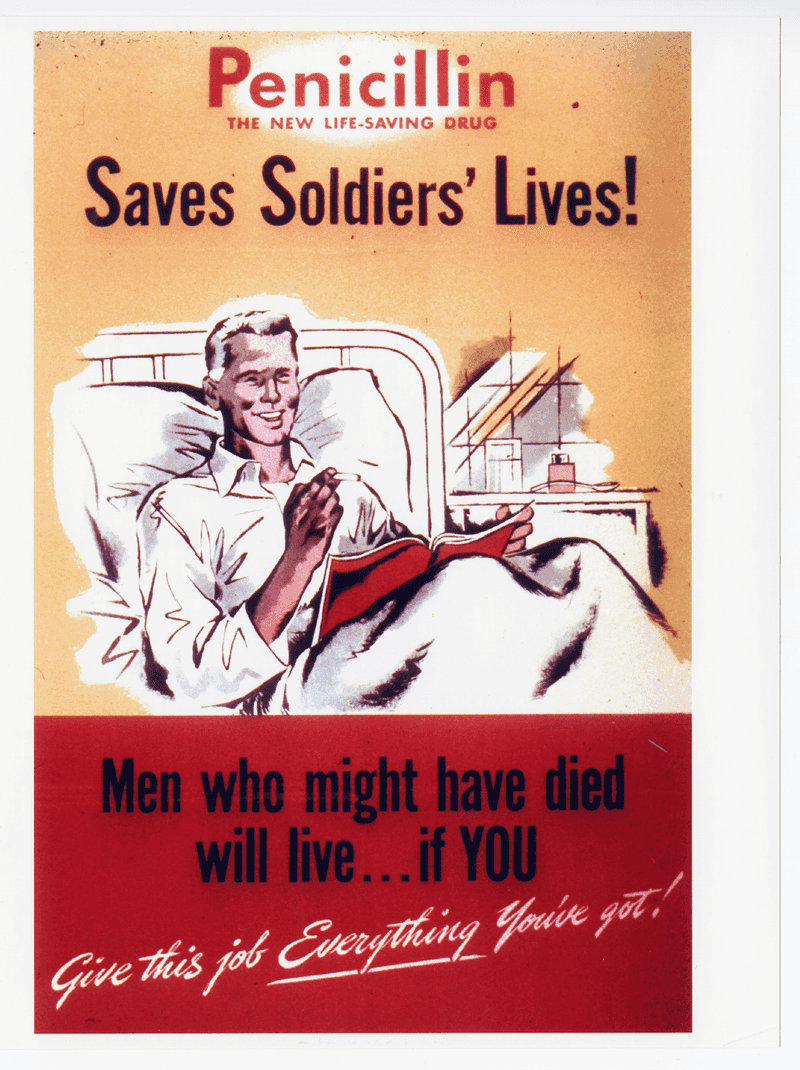When Alexander Fleming discovered penicillin in 1928, he had no idea he’d just changed the future of medicine. But it wasn’t until World War II that this “accidental” discovery truly reached its full, life-saving potential. These 10 eye-opening facts reveal how a moldy petri dish, a global war, and a bit of luck transformed healthcare forever.
1. Penicillin Was Discovered by Total Accident
In 1928, Alexander Fleming stumbled upon a scientific marvel entirely by chance. Returning from vacation, he noticed a mold mysteriously growing in one of his petri dishes. This unexpected mold didn’t just linger—it actively destroyed surrounding bacteria. The mold, identified as Penicillium notatum, became the cornerstone for penicillin.
Fleming’s accidental discovery marked a turning point in medical history. It showcased the unpredictability of scientific exploration. While initially overlooked, this serendipitous find set the stage for future antibiotic developments, proving that sometimes, chance can lead to groundbreaking innovations.
2. Fleming Didn’t Think It Was a Big Deal
Despite recognizing penicillin’s potential, Fleming didn’t see it as revolutionary. He published his findings, but few scientists paid attention. Fleming doubted penicillin could ever be developed into a viable drug.
His modest view appeared to downplay what would later become a healthcare revolution. At this stage, penicillin was more a curious anomaly than a miracle cure. Fleming’s skepticism reflected the scientific community’s initial indifference. This oversight highlights how innovation often requires persistence and collaboration to realize its full potential, beyond the initial discovery.
3. The Real Breakthrough Came a Decade Later
The true journey of penicillin’s transformation began in the late 1930s. Scientists Howard Florey and Ernst Chain at Oxford University took on the challenge of purifying penicillin. Their work was pivotal in overcoming the hurdles that Fleming faced.
Florey and Chain’s determination turned penicillin from a laboratory curiosity into a mass-producible drug. Their success laid the groundwork for the antibiotic’s widespread use. These efforts underscored the importance of teamwork and innovation in scientific progress, making penicillin widely available during crucial times.
4. The U.S. Military Jumpstarted Mass Production
World War II created an unprecedented demand for effective antibiotics. The U.S. War Production Board prioritized penicillin as a military secret, coordinating efforts to accelerate its production. This urgency transformed penicillin from a scientific novelty to an essential wartime commodity.
Military intervention ensured penicillin was produced on a massive scale, saving countless lives on the battlefield. The collaboration between scientists and military planners exemplified the era’s innovative spirit. This initiative showcased how global conflicts can fast-track technological advancements, ultimately benefiting society at large.
5. Fermentation Tanks Were Key to Scaling Up
The challenge of mass-producing penicillin was formidable. Scientists devised a method using large fermentation tanks to cultivate the penicillin mold. A surprising discovery on a moldy cantaloupe in a Peoria, Illinois market provided a robust strain for production.
This advancement was revolutionary, as it facilitated the extensive scaling up of penicillin production. The fermentation process was a critical development, ensuring that the antibiotic could meet global demands. These innovations illustrate the inventive spirit that defined the era, transforming a laboratory wonder into an accessible remedy.
6. Penicillin Saved Thousands on D-Day Alone
By June 1944, penicillin was in widespread use among Allied forces. On D-Day, the availability of this antibiotic dramatically reduced death and amputation rates from infected wounds.
The effectiveness of penicillin on the battlefield highlighted its life-saving potential. This pivotal moment demonstrated penicillin’s critical role in modern warfare medicine. Soldiers who might have succumbed to infections were given a second chance, underscoring penicillin’s transformative impact. The success on D-Day marked a significant milestone, securing penicillin’s legacy as a miracle drug.
7. Black Soldiers Were Given Penicillin First—in Secret Trials
Before its general release, the U.S. Army conducted secret penicillin trials on African American soldiers suffering from syphilis. This decision, made without informed consent, was both a medical breakthrough and an ethical controversy.
The trials provided crucial data, proving penicillin’s efficacy against bacterial infections. Yet, the ethical implications remain a dark chapter in medical history. These events raise questions about the balance between scientific advancement and human rights, highlighting the complex legacy of penicillin’s development during wartime.
8. Penicillin Was Once More Valuable Than Gold
In the early 1940s, penicillin’s rarity made it incredibly valuable. Doctors would go to great lengths, even collecting patients’ urine, to extract and reuse the precious antibiotic.
This practice reflects the desperation and innovation of the time. The scarcity of penicillin showcased its worth in gold-like terms. As production methods improved, penicillin became more accessible, but its initial value underscores the immense demand for effective treatments. The era’s resourcefulness paved the way for modern pharmaceutical practices, demonstrating the lengths humanity will go to preserve life.
9. Fleming Warned About Antibiotic Resistance Early On
In 1945, Alexander Fleming accepted the Nobel Prize, using the opportunity to issue a prescient warning. He cautioned against the overuse of penicillin, foreseeing the rise of resistant bacteria strains.
Fleming’s foresight remains incredibly relevant today, as antibiotic resistance poses a global threat. His cautionary words have inspired ongoing research and public health initiatives. This early awareness serves as a reminder of the delicate balance needed in medical advancements. The warning illustrates the responsibility accompanying groundbreaking discoveries, emphasizing prudent use and further innovation.
10. WWII Turned Penicillin Into a Global Game-Changer
Without WWII, penicillin might have remained an obscure laboratory curiosity. The conflict accelerated its development, turning it into a global game-changer. Penicillin’s role in war demonstrated its broad potential to save lives.
Post-war, its impact extended beyond the battlefield, transforming public health worldwide. This era underscored the unpredictable pathways of scientific progress, where necessity drives rapid innovation. Penicillin’s journey from moldy petri dish to miracle drug exemplifies the serendipitous nature of discovery, highlighting how global crises can shape the future of medicine.

